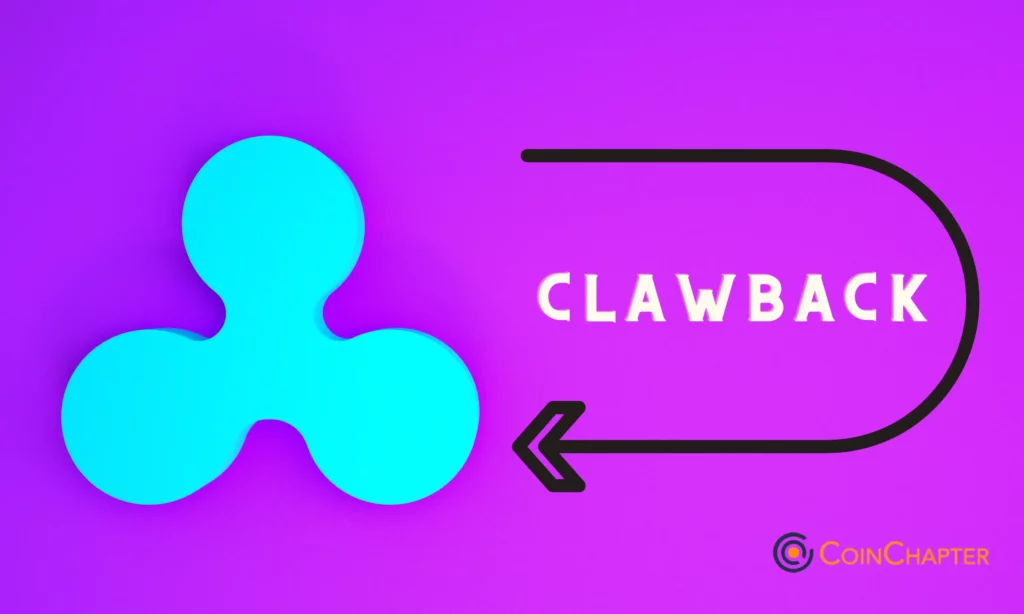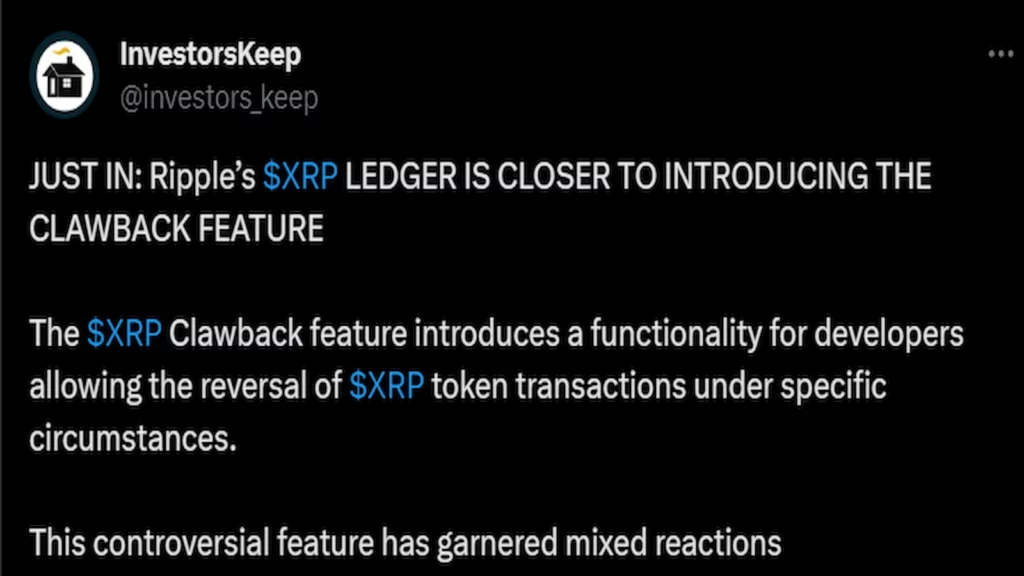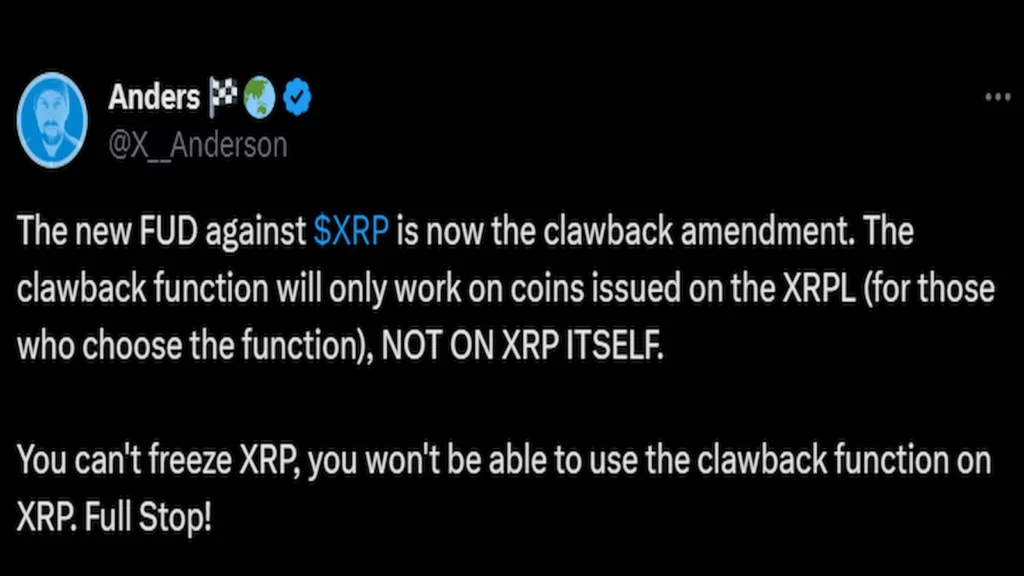
NOIDA (CoinChapter.com) — Ripple is set to introduce a new feature on its XRP Ledger (XRPL) platform on Feb. 8. Dubbed ‘clawback,’ the feature aims to intrigue financial institutions and regulatory bodies. However, it risks attracting some unwanted controversy.
What is the Clawback Feature?
The clawback feature on the XRPL refers to the ability of issuers to retract issued tokens under specific conditions forcibly. These tokens, representing various forms of value, such as fiat currencies, other cryptocurrencies, or commodities, are essentially digital IOUs (I Owe You) created on the ledger.
The clawback mechanism is for scenarios where tokens must be returned to the issuer. For instance, in cases of transaction errors, compliance requirements, or fraud prevention.
Meanwhile, the Ripple community showed tremendous support for the proposal, set to go live on Feb. 8.

Moreover, the upcoming feature would likely appeal to financial institutions that operate within a stringent regulatory framework.
The XRP clawback feature would allow for correcting transaction mistakes and adherence to anti-money laundering (AML) and counter-financing of terrorism (CFT) regulations. Furthermore, the upcoming update might also aid in managing legal disputes.
Such functionalities would make XRPL a blockchain solution that is efficient, scalable, and compliant with global financial regulations.
Clawback and Issued Tokens vs. Native XRP Token
It’s vital to distinguish between the clawback feature for issued tokens and the native XRP token. Issued tokens on the XRPL are claims against the issuer, who can embed a clawback clause as part of the token’s issuance agreement.
This control mechanism is an issuer-centric feature, aligning with traditional financial practices where reversibility of transactions can be a necessary function.

Conversely, the native XRP token will operate without the possibility of clawbacks. XRP transactions are immutable once validated and confirmed by the network, adhering to the blockchain principle of irreversible transactions.
Irreversible blockchain transactions ensure security and trust without central control.
The Implications of the Clawback Feature
The introduction of the clawback feature into the XRP Ledger reflects a sophisticated balance between innovation and regulation. For financial institutions, the ability to issue digital assets with clawback options means leveraging blockchain’s efficiency while maintaining compliance with regulatory mandates.
However, the clawback feature also sparks a debate within the cryptocurrency community. Users have raised questions about the balance between control and the decentralized ethos of blockchain technology.

Additionally, several Bitcoin maxis alleged that Ripple was becoming a communist platform with the clawback feature. This issue lies with traders not trusting that Ripple would not use the clawback feature on its native XRP token.
Users demanded that the clawback feature only be applied for financial and regulatory purposes. At the same time, the feature should not undermine the principles of decentralization.


